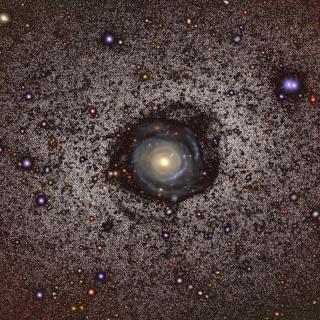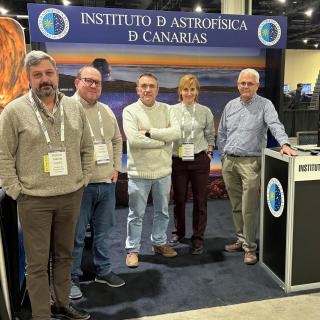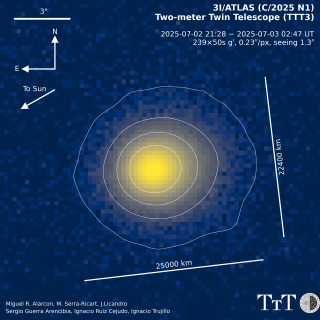It may interest you
-
 Astronomers at the Instituto de Astrofísica de Canarias (IAC), using the 2-meter robotic Two-meter Twin Telescope (TTT) at the Teide Observatory, have obtained the deepest optical images ever taken of Malin 2, one of the largest and faintest spiral galaxies in the Universe. These ultra-deep observations have revealed previously unseen structures, including several diffuse stellar emissions and a striking, elongated spiral-like feature, hinting at past interactions with other galaxies. The team has also identified a potential ultra-diffuse dwarf galaxy (UDG) about 400,000 light-years fromAdvertised on
Astronomers at the Instituto de Astrofísica de Canarias (IAC), using the 2-meter robotic Two-meter Twin Telescope (TTT) at the Teide Observatory, have obtained the deepest optical images ever taken of Malin 2, one of the largest and faintest spiral galaxies in the Universe. These ultra-deep observations have revealed previously unseen structures, including several diffuse stellar emissions and a striking, elongated spiral-like feature, hinting at past interactions with other galaxies. The team has also identified a potential ultra-diffuse dwarf galaxy (UDG) about 400,000 light-years fromAdvertised on -
 The Instituto de Astrofísica de Canarias (IAC) is demonstrating the quality and international relevance of the Canary Islands Observatories at the 245th session of the American Astronomical Society (AAS) meeting being held this week in Maryland (USA). This meeting, led by the American astrophysics community, brings together the world's most important research centres in this field to share lines of work and proposals for the present and the future. The IAC delegation in Maryland is headed by the director of the centre, Valentín Martínez Pillet, who is part of the panel of speakers with aAdvertised on
The Instituto de Astrofísica de Canarias (IAC) is demonstrating the quality and international relevance of the Canary Islands Observatories at the 245th session of the American Astronomical Society (AAS) meeting being held this week in Maryland (USA). This meeting, led by the American astrophysics community, brings together the world's most important research centres in this field to share lines of work and proposals for the present and the future. The IAC delegation in Maryland is headed by the director of the centre, Valentín Martínez Pillet, who is part of the panel of speakers with aAdvertised on -
 The Instituto de Astrofísica de Canarias (IAC) is actively participating in the observation of object 3I/ATLAS (C/2025 N1 ATLAS), initially included as A11pl3Z in the confirmed list of Near-Earth Objects (NEOs) of the International Astronomical Union's Minor Planet Centre (IAU/MPC). The object, which has been shown to be the third interstellar object detected in our solar system, was discovered by one of the telescopes in the ATLAS network for the detection and early warning of asteroids on an Earth-impact trajectory. The IAC is part of this network with its new telescope structure, ATLASAdvertised on
The Instituto de Astrofísica de Canarias (IAC) is actively participating in the observation of object 3I/ATLAS (C/2025 N1 ATLAS), initially included as A11pl3Z in the confirmed list of Near-Earth Objects (NEOs) of the International Astronomical Union's Minor Planet Centre (IAU/MPC). The object, which has been shown to be the third interstellar object detected in our solar system, was discovered by one of the telescopes in the ATLAS network for the detection and early warning of asteroids on an Earth-impact trajectory. The IAC is part of this network with its new telescope structure, ATLASAdvertised on